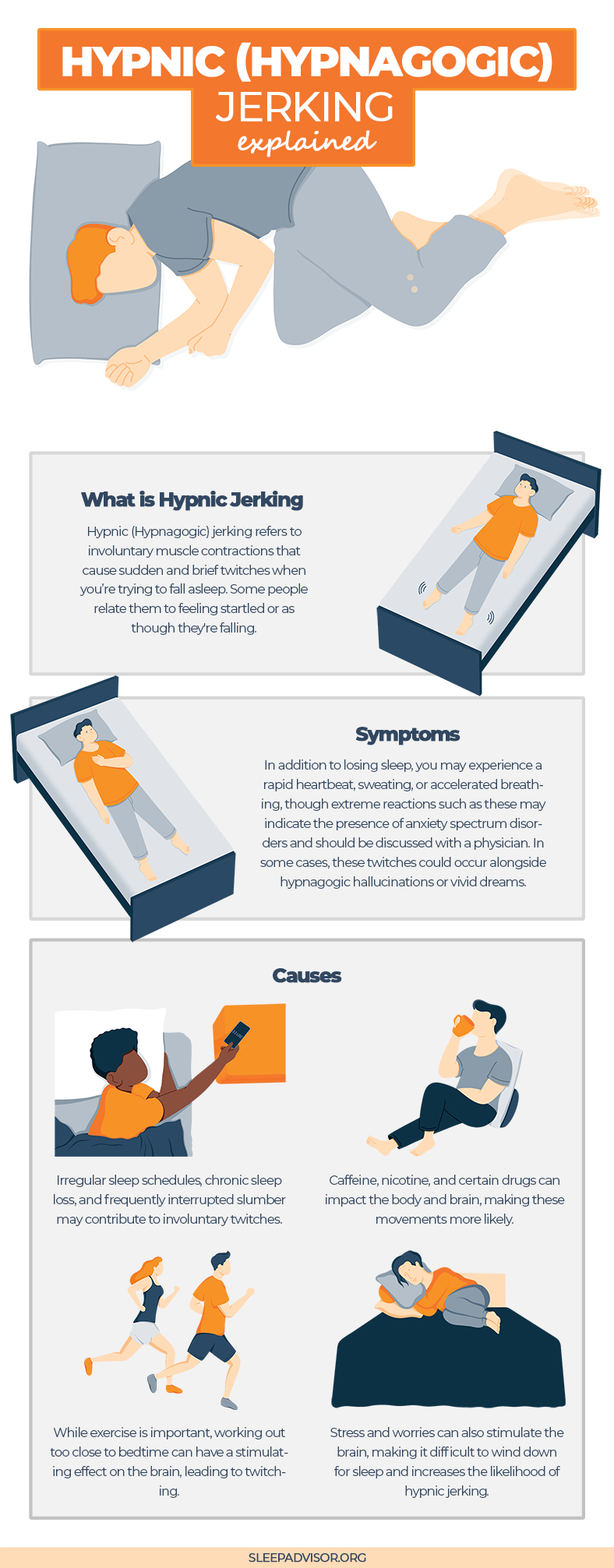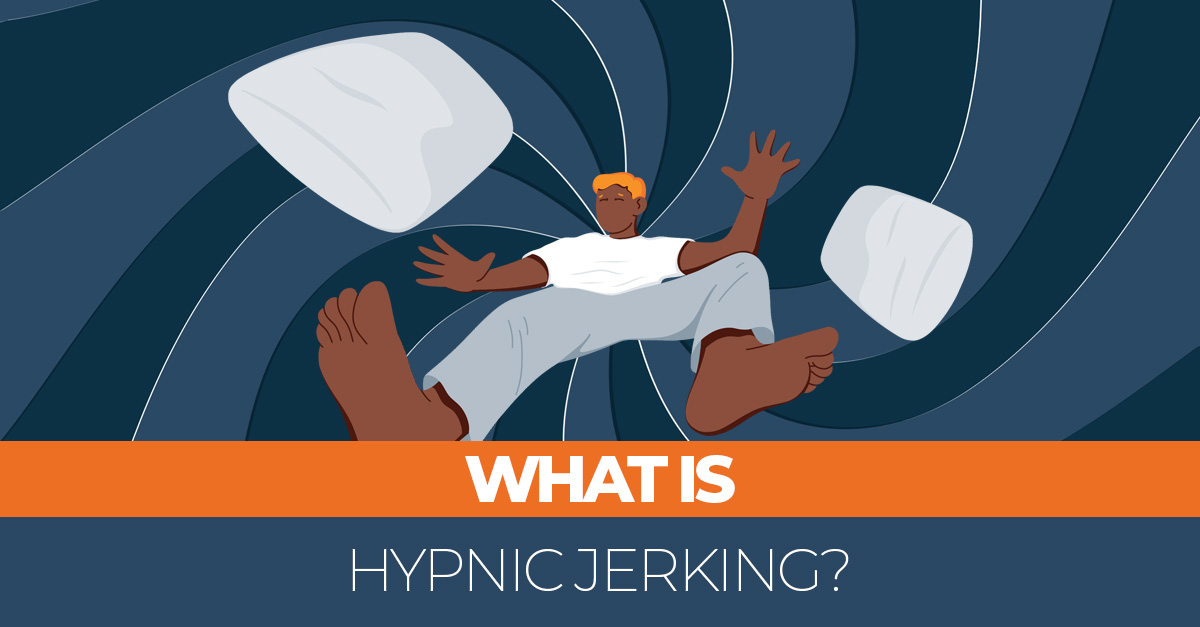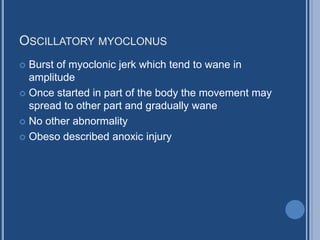myoclonic jerking end of life treatment
Many patients also experience myoclonic jerks involuntary muscle movement and twitches. Fever Fever may be caused by infection medicines or the cancer itself.
/overview-of-myoclonic-epilepsy-4175105_final-294e31312f174513a65079058ebb40fb.png)
Myoclonic Epilepsy Symptoms Causes Diagnosis And Treatment
When the patient is very near death medicine to stop the myoclonic jerking may be given instead of changing the opioid.

. Although the condition name refers to kidney disease not everyone with the condition has problems with kidney function. Chronic also known as Lance-Adams syndrome refers to myoclonus that starts days to. When pathological myoclonus is a symptom of a broad range of neurological and systemic diseases.
When myoclonic jerking is severe drugs may be used to calm the patient down relieve anxiety and help the patient sleep. Fatigue feeling very tired can have many causes at the end of life. Pain management specialists agreed to switch his regimen from morphine sulfate to hydromorphone hydrochloride 4 mg orally every 4 hours and a fentanyl 25 mg transdermal patch every 72 hours.
Benzodiazepines are the primary symptomatic treatment at end-of-life. Myoclonus can occur with all routes of administration. A patients spouse may be the first to recognize this symptom.
Clonazepam is a medication that is commonly used to treat some forms of myoclonus. The movement problems associated with AMRF syndrome typically begin with involuntary. Post-hypoxic myoclonus PHM refers to myoclonus occurring after hypoxic brain injury resulting from a cardiac arrest characterised by abrupt irregular contractions of muscles that may be focal or generalised.
When she returned home we went to have her radiation treatment administered on her. Amount of pain medication oxycodone mainly and liquid morphine. The review of clinical and neurophysiological findings suggests that myoclonus after hypoxia manifests in one or a combination of distinct syndromes.
Medication is needed to treat this form of epilepsy. Acute starts within 48 hours after a cardiac arrest. If myoclonus is affecting daily life or it occurs with other symptoms a doctor can recommend a range of treatment options.
Myoclonus is a brief less than half a second contraction involving agonist and antagonist muscles leading to a sudden jerk. Myoclonic twitches or jerks usually are caused by sudden muscle contractions tightening called positive myoclonus or by muscle relaxation called negative myoclonus. Most of the time however the underlying cause cant be cured or eliminated so treatment is aimed at easing myoclonus symptoms especially when theyre disabling.
Treatment of myoclonus is most effective when a reversible underlying cause can be found that can be treated such as another condition a medication or a toxin. When myoclonic jerking is severe drugs may be used to calm the patient down relieve anxiety and help the patient sleep. 8 11 Acute post-hypoxic generalized myoclonus usually appeared within.
It may be a normal phenomenon as in the so-called sleep starts. Acute andor chronic myoclonus. If a patient has concomitant status epilepticus existing algorithms for treatment of status epilepticus should be used preferentially using valproic acid instead of phenytoin given the benefit of valproic acid for myoclonus and the potential for phenytoin to worsen subcortical myoclonus.
The symptoms include agitation restlessness delirium confusion and impaired consciousness. The myoclonus that appeared in comatose patients after hypoxic injury to the brain was usually generalized in nature but multifocal myoclonus periodic eye opening swallowing movements upward eye deviation and flexion of the neck and trunk have been reported as well. This term used to describe a mental state that many terminal patients move through during their final stages of life is estimated to affect up to 85 of patients.
Other drugs such as certain barbiturates phenytoin levetiracetam valproate and primidone are used to treat epilepsy. Tey may occur infrequently or many times per minute. In the case of opioid-induced myoclonus rotation to a different opioid may help.
Myoclonus at the End of Life. 24 Further treatment of either cortical or subcortical. Terminal agitation or restlessness can be defined as agitated delirium with cognitive impairment.
Treatment consists of correction of the underlying cause and symptomatic treatment of the myoclonus. Myoclonus is not painful but the abrupt onset of these uncontrollable muscle spasms can be distressing. Myoclonic seizures involve muscle jerking made worse by alcohol inadequate sleep and infection.
When myoclonic jerking is severe drugs may be used to calm the patient down relieve anxiety and help the patient sleep. Treatment options for these two distinct clinical-neurophysiologic post-hypoxic myoclonus syndromes were approached differently. It tends to occur frequently at the end stage of cancer.
When the patient is very near death medicine to stop the myoclonic jerking may be given instead of changing the opioid. When the patient is very near death medicine to stop the myoclonic jerking may be given instead of changing the opioid. Action myoclonusrenal failure AMRF syndrome causes episodes of involuntary muscle jerking or twitching myoclonus and often kidney renal disease.
3 Other symptoms include hallucinations paranoia confusion and disorientation. Alternatively it may signal non-organic illness 8 of myoclonus is. After discontinuing his morphine his myoclo-.
Multiple medications may be required by some. 2 The main symptoms are agitation myoclonic jerks or twitching irritability and impaired consciousness. After ruling out other causes of myoclonus the patient was evaluated for the possibility of opioid-induced myoclonus.
Dosages are increased gradually until. Myoclonic jerks may occur alone or in sequence in a pattern of movement or without pattern. If the offending agent is a non-essential medication it should be discontinued.
Medication may be given to minimize jerking or twitching at the end of life and improve sleep quality. End-of-Life Signs and Palliative Care Are Unique to Each Patient. Fever may be caused by infection medicines or the cancer itself.
Myoclonus the uncontrollable twitching and jerking of muscles or muscle groups usually occurs in the extremities starting with only an occasional random jerking movement. She began to experience myoclonic jerks in her lower extremities that progressed to involve her entire body. Myoclonic jerks and inattentiveness may be rare neurologic complications of ATO toxicityClinicians must be aware of this rare toxicity given that the ATO and ATRA combination is now standard-of-care treatment of low-risk APL.
Get Free Access Through Your Institution.

Terminal Restlessness And Hospice Patients A Guide

Myoclonic Seizures And Infantile Spasms Clinical Gate
/involuntary-movement-5187794.FINAL-9de251a0f498416b8076299363531c38.gif)
Involuntary Movement Types Causes And Treatment
Myoclonic Seizures Medlink Neurology
:max_bytes(150000):strip_icc()/overview-of-myoclonic-epilepsy-4175105_final-294e31312f174513a65079058ebb40fb.png)
Myoclonic Epilepsy Symptoms Causes Diagnosis And Treatment

Often Asked Elderly Jerking When On Hospice Compass Regional Hospice Serving Queen Anne Kent And Caroline Counties On Maryland Eastern Shore

Care For The Dying Patient Common Symptoms At End Of Life Lisa Marr Md Devon Neale Md Palliative Medicine Ppt Download
Myoclonic Epilepsy Of Infancy Epilepsy Foundation

Hypnic Jerking What Are The Symptoms And How To Stop It
/overview-of-myoclonic-epilepsy-4175105_final-294e31312f174513a65079058ebb40fb.png)
Myoclonic Epilepsy Symptoms Causes Diagnosis And Treatment

Pdf Myoclonus And Seizures In Progressive Myoclonic Epilepsies Pharmacology And Therapeutic Trials
/overview-of-myoclonic-epilepsy-4175105_final-294e31312f174513a65079058ebb40fb.png)
Myoclonic Epilepsy Symptoms Causes Diagnosis And Treatment

Safety And Effectiveness Of Palliative Drug Treatment In The Last Days Of Life A Systematic Literature Review Journal Of Pain And Symptom Management

Hypnic Jerking What Are The Symptoms And How To Stop It

Myoclonic Seizures Causes Symptoms Diagnosis Treatment

Myoclonic Seizures Medlink Neurology

Drugs Often Useful In The Treatment Of Post Hypoxic Myoclonus 3 4 Download Table

